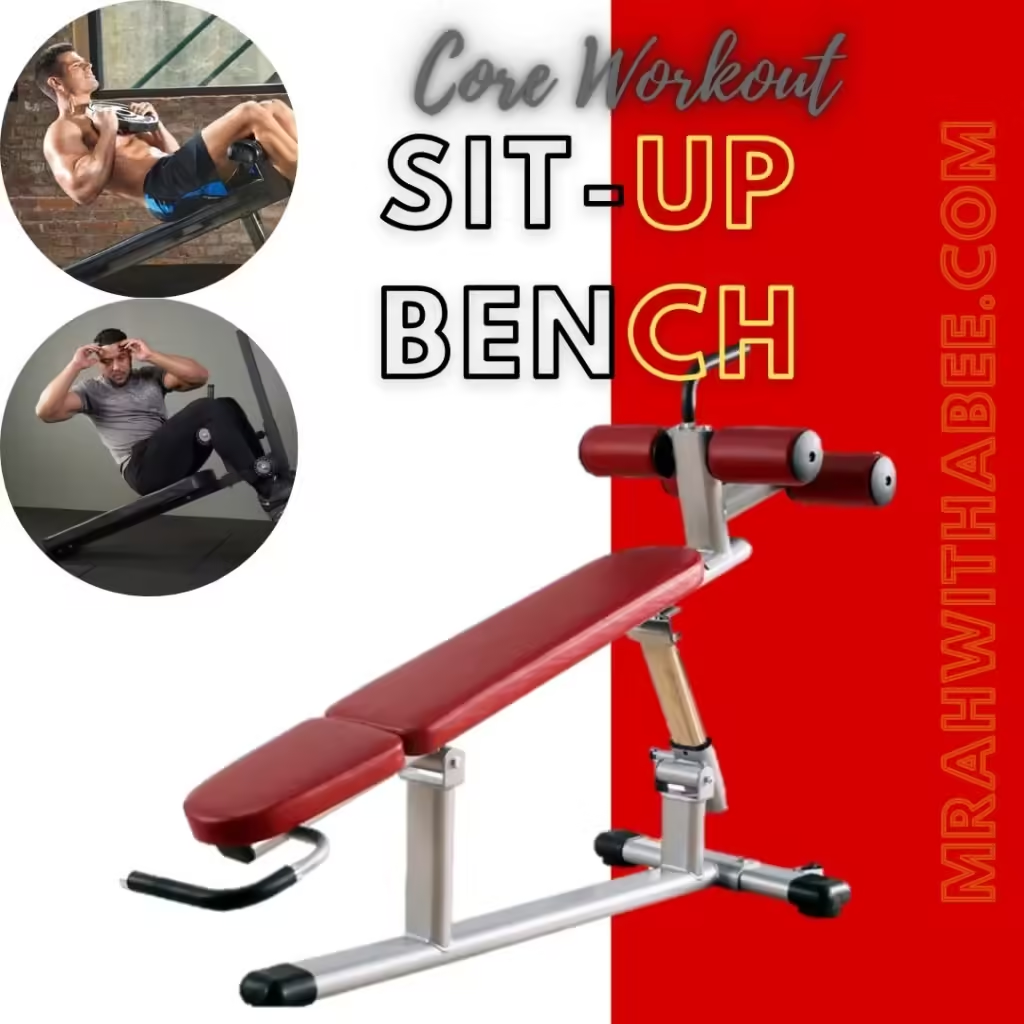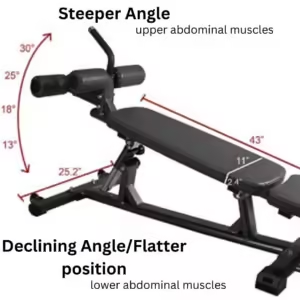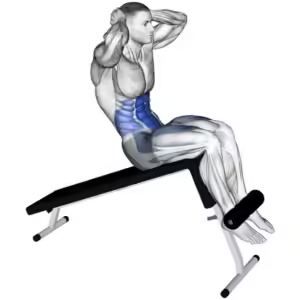A strong core is essential for overall fitness, supporting balance, posture, and everyday movements. A sit up bench can be a valuable tool for core workouts, helping you maximize results and improve exercise form. You may consider a sit-up bench to be a simple piece of equipment, and you might even wonder, “Why do I need a sit-up bench?” However, this piece of fitness gear is much more versatile than you might realize. In recent years, its popularity has surged as more people discover its benefits beyond just traditional sit-ups. Sit up benches are designed to support a variety of exercises, making them a valuable addition to any home gym. With adjustable angles and sturdy construction, they can help improve your core strength, stability, and overall fitness.
Beyond sit-ups, you can use them for exercises like decline crunches, leg raises, and even some weightlifting movements. As fitness enthusiasts increasingly seek effective ways to enhance their workouts, the sit-up bench has emerged as a multifunctional tool that can elevate your training routine. Whether you’re a beginner or a seasoned athlete, incorporating a sit up bench can add diversity to your workouts and help you achieve your fitness goals more effectively.
What is a Sit Up Bench?
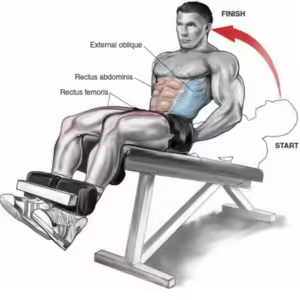
A sit up bench is a specialized workout bench crafted specifically for core exercises, such as sit-ups and crunches. This piece of equipment typically includes padded support, which provides comfort during workouts and features adjustable angles that allow users to tailor the intensity of their exercises to suit their fitness levels. The ability to modify the angle of the bench is particularly beneficial, as it enables users to engage different muscle groups more effectively. For instance,
- A Steeper incline can increase the challenge of a standard sit-up, targeting the upper abdominal muscles (Rectus abdominis) more intensely.
- A decline position can shift focus to the lower abs like Transversus abdominis.
In addition to sit-ups and crunches, many sit-up benches can be used for a variety of exercises that enhance overall core strength and stability. This versatility makes them a valuable addition to any home gym or fitness facility. Whether you’re a beginner aiming to build foundational strength or an advanced athlete looking to refine your core workouts, a sit-up bench can help you achieve your fitness goals more efficiently and effectively. With the added comfort and adjustable features, you can maximize your workout potential while minimizing the risk of injury.
Benefits of Using a Sit-Up Bench
Using a sit-up bench in your routine offers several advantages:
Improved Form
A sit-up bench offers essential stability and support, which helps you maintain proper posture during your exercises. This is crucial for preventing strain and injury, allowing you to focus on your movements without worrying about your alignment. By providing a designated space for your workouts, the bench encourages you to engage your core effectively and execute each repetition with the correct technique.
Enhanced Range of Motion
One of the standout features of a sit-up bench is its adjustable angles, which enable you to perform deeper sit-ups. This increased range of motion intensifies muscle engagement, especially in the abdominal area. By allowing you to adjust the incline or decline of the bench, you can target different parts of your core more effectively, leading to improved strength and definition over time.
Increased Workout Intensity
Using a sit-up bench allows you to incorporate greater resistance into your core workouts, significantly boosting their effectiveness. Whether you choose to add weights or simply rely on the bench’s incline to increase the challenge, you can elevate your training intensity. This capability ensures that you continually progress in your fitness journey, making it easier to achieve your goals, whether you’re looking to build strength, improve endurance, or sculpt your midsection.
In short,
- Improved Form: Provides stability and support, helping you maintain correct posture.
- Enhanced Range of Motion: Adjustable angles allow for deeper sit-ups, intensifying muscle engagement.
- Increased Workout Intensity: Allows for greater resistance, making core workouts more effective.
How to Use a Sit-Up Bench
Set-Up
Begin by adjusting the angle of the bench to match your fitness level. A steeper incline will increase the challenge, while a more horizontal position may be better for beginners.
Positioning
Take a seat on the bench and securely hook your feet under the designated supports. This will provide stability and help anchor your body during the exercise.
Form
Maintain a straight back throughout the movement. As you lower and lift your body, focus on engaging your core muscles to maximize effectiveness and minimize strain.
Safety
Be mindful of your neck to avoid unnecessary strain. Keep your movements slow and controlled, ensuring that you maintain proper form throughout your workout. This approach will help you get the most out of your exercises while reducing the risk of injury.
Exercises You Can Do on a Sit-Up Bench
Standard Sit-Ups
The classic sit-up is a fundamental exercise that effectively targets the entire core, engaging the abdominal muscles, hip flexors, and even the lower back. It’s a great starting point for building overall core strength and stability.
Crunches
Crunches are a more focused exercise that emphasizes the upper abdominal muscles. By performing smaller, controlled movements, you can isolate this area, making it an excellent way to enhance upper abs definition while minimizing strain on the lower back.
Leg Raises
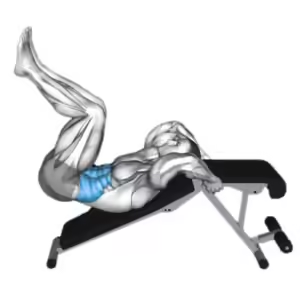
Leg raises are particularly effective for strengthening the lower abdominal muscles. This exercise requires you to lift your legs while keeping your back flat against the bench, engaging your core throughout the movement. It’s a great addition to any core workout routine for targeting the lower abs specifically.
Oblique Twists
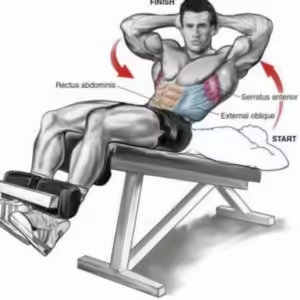
Oblique twists introduce a rotational movement that specifically targets the oblique muscles on the sides of your abdomen. This exercise not only helps improve core strength but also enhances functional movement and stability, making it beneficial for everyday activities and athletic performance.
Weighted Sit-Ups
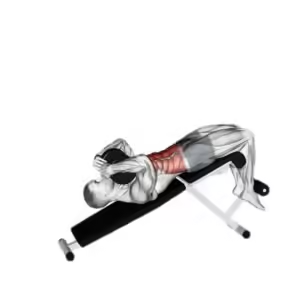
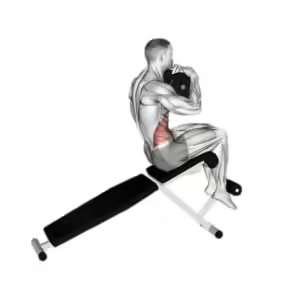
To increase the challenge of standard sit-ups, you can add resistance through weighted sit-ups. By holding a weight plate or a medicine ball while performing the movement, you boost the difficulty level and further engage your core muscles, promoting greater strength gains and muscle development. This variation is ideal for those looking to elevate their workout intensity and push their limits.
Incorporating a Sit-Up Bench into Your Workout Routine
To optimize results, incorporate a mix of sit-up bench exercises into your workout:
Beginner Routine
For those just starting their fitness journey, a solid routine might include three sets of standard sit-ups, crunches, and leg raises. This combination provides a comprehensive approach to core training, allowing you to build strength progressively. Aim for 10-15 repetitions (reps) of each exercise per set, ensuring you maintain proper form throughout. This foundational routine will help you develop overall core stability and endurance, setting the stage for more advanced exercises in the future.
Advanced Routine
Once you’ve mastered the basics, you can elevate your workout by incorporating more challenging exercises. An advanced routine could include oblique twists and weighted sit-ups alongside your standard sit-ups, crunches, and leg raises. Adding oblique twists will target your side muscles, enhancing rotational strength and stability, while weighted sit-ups increase resistance, further intensifying the workout. For this routine, consider performing 3 sets of 8-12 repetitions for each exercise, focusing on controlled movements to maximize effectiveness and minimize the risk of injury. This advanced regimen will not only improve your core strength but also enhance your overall athletic performance.
Choosing the Right Sit-Up Bench
Consider these factors when selecting a sit-up bench:
Stability and Weight Capacity
When selecting a sit-up bench, it’s essential to choose one that can securely support your weight. Look for a bench with a solid construction and a high weight capacity to ensure it remains stable during your workouts, providing you with confidence and safety as you perform your exercises.
Adjustability
Opt for a bench that offers multiple incline levels. This feature allows you to customize the angle to suit different exercises and your fitness level, enabling a greater range of movement and intensity. Adjustable benches can enhance your workout versatility, making it easier to target various muscle groups effectively.
Comfort
Comfort is key when it comes to workout equipment. Make sure the padding on the bench is both durable and cushioned enough to provide support during your exercises. Quality padding will help reduce the risk of discomfort or injury, allowing you to focus on your form and maximize the effectiveness of your workouts.
FAQs
- What is a sit-up bench?
A sit-up bench is a workout tool designed for core exercises, offering stability and adjustable angles. - What exercises can you do on a sit-up bench?
Exercises include sit-ups, crunches, leg raises, oblique twists, and weighted sit-ups. - How does a sit-up bench improve core workouts?
It enhances form, and range of motion, and allows for more challenging movements. - Are sit-up benches suitable for beginners?
Yes, they’re adjustable and can be tailored to different fitness levels. - How do you maintain a sit-up bench?
Regularly clean it, check for loose screws, and store it in a dry place. - Is it safe to use weights on a sit-up bench?
Yes, but only if you’re experienced and have practiced with lighter weights. - How much should I spend on a sit-up bench?
Prices vary, but quality models range from $50 to $200 depending on features. - Does using a sit-up bench reduce belly fat?
While it builds muscle, combined cardio and diet are necessary to reduce belly fat. - What’s the difference between a flat and an incline sit-up bench?
Incline benches offer more intensity and allow deeper movement. - Can a sit-up bench be used for other exercises?
Yes, many benches support exercises like dumbbell presses and step-ups.
Thank you for reading, for more fitness-related blogs visit this link, for more interesting articles visit our homepage.

